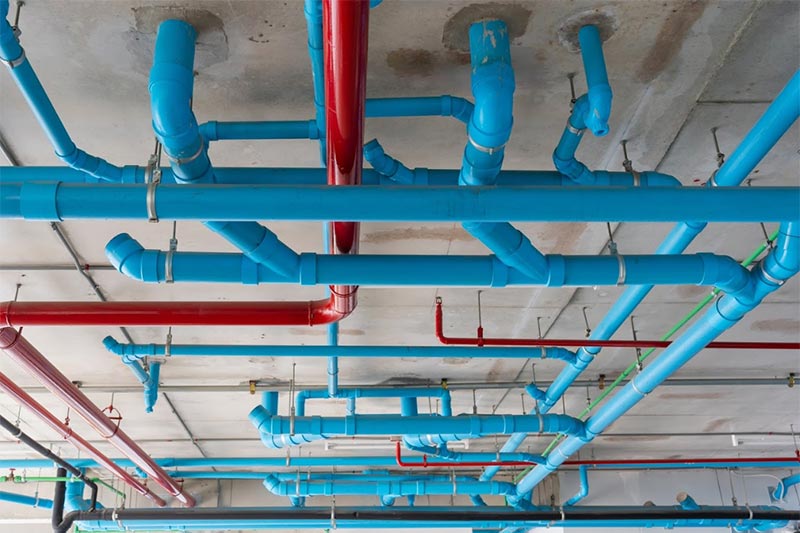
A major plumbing problem involves a damaged pipeline in your property, and there are two ways to repair worn out pipelines. You can either replace them with a traditional pipe or choose trenchless pipelining. But what’s cheaper between pipelining and traditional pipes?
In this article, you’ll learn the difference between pipelining and traditional piping methods, and determine the most cost-effective method for your plumbing projects.
What Is Pipelining and How It Is Done
Pipelining is a no-dig solution to repair or replace cracked, leaking, root-infested, or broken pipes. It’s used to smoothen or even out rough bends and joints. With pipelining, a new PVC pipe is installed within an existing damaged pipe. For improvement of more than 100 percent in original flow capacity, a watertight seal or epoxy is filled in between the old and new pipes.
Both residential and commercial sewer laterals and the property’s drainage pipes to the mainline can be pipe lined. In addition, collectors’ pipes, roof drainage pipes, and commercial floor drainage pipes can also be pipelined.
For faster and better results, plumbers also use a hot air curing system for pipelining installation. This involves the use of portable tankless heater for faster curing of laid pipes. The cured pipelines look better as water presses the new pipe liner to the existing pipe.
So, how do you know if you need pipe lining? Here are the signs and symptoms that your property would need pipelining:
- Water with discoloration
- Poor water flow
- Odors or leaks
- Stains on tubs
- Stains on sinks
- Continuous sewage backups
Pipe Lining Is Less Messy
Pipelining won’t cause a lot of mess in the worksite. On the other hand, traditional piping usually requires removal of finishes. And, you can’t expect the plumber to replace damaged finishes, so you’ll have to spend money and hire another contractor to fix it.
Here’s the difference between pipelining and traditional pipe replacement:
- Pipe Lining: It’s less messy as compared to a traditional pipe replacement. Fixtures and finishes won’t be removed when repairing the broken plumbing pipe. The pipe lining technician would simply need an access point to clean or drain your unit.
- Traditional Pipe Replacement: With traditional pipe replacement, the corroded pipe needs to be completely replaced. However, the pipe should be accessed to replace it, which results in the removal of drywall, tiles, and other finishes.

Pipe Lining Cause Minimal Disruption
Pipelining materials include epoxy and custom-designed PVC Coated liner tubes, which are installed with minimal disruption. Because the pipeline is continuous and smooth, without joints or seams, plumbers can install pipe liners fast with minimum disruption and inconvenience as compared to traditional pipe replacement that involves excavation.
Also, pipe liners eliminate serious landscape and environmental damage because the liner tub travels underneath sidewalks, garages, landscaping, buildings, patios, and swimming pools. Because of these reasons, professional plumbing contractors highly recommend pipelining.
Here are the capabilities of a pipelining system:
- It applies to all types of drainage and sewer pipe, including galvanized steel, copper, cast/black iron, and lead pipes.
- The diameters range from 3 to 10 inches.
- Pipelining lengths up to 300 feet.
- Pipelines bend up to 90 degrees.
- Pipelining repairs all common pipe materials.
- Pipelining is used for spot repairs of structural defects, which involves the insertion of a part or whole pipe liner sections as well as blind ends.
Pipe Lining Is Cheaper than Traditional Pipe
Pipe problems can be caused by a tree root, piercing, and infiltrating drainage systems, through pipes, seams, and connections, causing blockages and water loss. Also, water itself can erode, corrode, plug, or weaken your plumbing system over time.
Copper and galvanized metal plumbing systems corrode within ten years, which prompts the property owner to stop the water from coming in contact with the pipe. When you experience any of these pipe problems, pipelining is still a cheaper solution and doesn’t compromise the final outcomes.
Pipelining is cheaper than a traditional pipe replacement. When compared to traditional pipe replacement, pipelining is a “no-dig” system. That’s why you save money on costly excavation and demolition involved in using traditional pipes. Pipelining is also less expensive as compared to traditional re-piping alternatives, like an open trench or excavation methods.
Conclusion
Along with other benefits, pipelining is a lot cheaper than traditional pipe replacement. Since the plumber only requires an access point in pipelining, disruption and mess are minimal. With pipelining, you also get to keep the beauty of your property without the evacuation and removal of finishes involved in traditional pipe methods.
